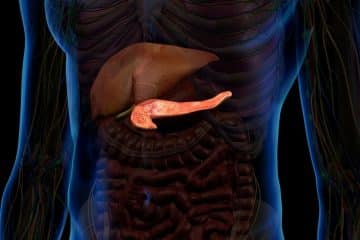Everything About Sleeve Gastrectomy Procedure
Excessive weight gain and obesity are plaguing the world, with approximately 39 percent of the adult population of the world being overweight.
The statistics are even worse in children and adolescents as one in five children are overweight, worldwide. These issues need to be tackled immediately as obesity is the root of many other health issues.
It can lead to heart diseases such as heart attack, high blood pressure, and buildup of cholesterol plaques in the blood vessels. It also increases the risk of cancer, stroke, infertility, and diabetes mellitus type 2.
However, it is important to note that losing weight is difficult for these people, especially just with a caloric deficit and physical exercises.
They may need to undergo surgical procedures to help them lose weight.
What is Sleeve Gastrectomy Procedure?
A sleeve gastrectomy procedure is performed with the purpose of limiting your stomach size and help you lose a significant amount of weight, over a short period of time.
For the purpose of this procedure, most of your stomach will be removed and the remaining stomach will be stapled together in a tube or banana shape.
The main aim is to reduce the stomach space, resulting in early satiety and decreased food consumption overall.
A sleeve gastrectomy is also known as vertical sleeve gastrectomy is most commonly performed laparoscopically, meaning that it is a minimally invasive surgical procedure.
Who can have a Sleeve Gastrectomy Procedure?
Sleeve gastrectomy procedure is a complex surgical procedure, and there are special criteria that you need to meet before you are able to undergo this procedure.
You may be a candidate for this weight loss surgery if:
Your BMI is 40 or higher, meaning that you fall in the severe obesity or morbidly obese category
- Your BMI is between 35 to 39.9, which puts you in the obese category, accompanied by health conditions such as type 2 diabetes mellitus, cardiovascular disorders, obstructive sleep apnea, and so on, as a result of excessive weight.
- Your BMI is between 30 to 34, however, you suffer from medical conditions as a result of your obesity.
- You have tried non-surgical methods to treat your obesity and lose weight, however, they have not been beneficial.
- You are going to make healthy lifestyle changes to ensure the changes are permanent.
- Moreover, to be eligible for a sleeve gastrectomy, you should be willing to commit to long-term follow-ups and monitoring, ensuring that you are maintaining a healthy lifestyle. It is important to note that this procedure is not a simple way of losing weight but rather a last-resort solution when other options have seemed to produce no results.
Using a standard body mass index calculator you can have a much better initial idea about you candidacy for a weight loss surgery
Benefits of Sleeve Gastrectomy Procedure?
Sleeve gastrectomy procedure is one of the most common weight loss procedures with patients losing about 60 percent to 70 percent of the excess weight.
The procedure has several benefits which can be credited to be the reason behind its fame and rising popularity.
Sleeve gastrectomy is considered to be more effective than other weight-loss surgeries, especially gastric band surgery in helping people lose weight.
It is considered to be equally efficient as a gastric bypass, however, gastric bypass has long-term complications and sleeve gastrectomy does not make it a better option overall.
Sleeve gastrectomy is a minimally invasive procedure that only takes approximately one hour, making it one of the fastest options amongst weight loss procedures.
You are most probably going to be discharged the next day, depending on your specific case, and will only be coming back for follow-up check-ups.
Moreover, the sleeve gastrectomy procedure helps you lose weight safely and quickly, hence, reducing your chances of developing potentially fatal medical conditions.
And if you already suffer from these comorbidities, then undergoing the surgery can help you manage your symptoms significantly.
Steps of Sleeve Gastrectomy Procedure
For the purpose of the sleeve gastrectomy procedure, your surgeon will place small incisions in your abdomen through which a laparoscopic probe will be inserted into your abdominal cavity.
Once the tools have been placed, your surgeon will begin removing most of your stomach, leaving behind a banana-shaped stomach. After the procedure, the laparoscopic probes will be removed and the incisions will be sutured shut.
Risks and Complications of Sleeve Gastrectomy Procedure
A sleeve gastrectomy procedure is a surgical procedure and just like any other surgical procedure, it has certain risks and complications associated with it. These are:
- Allergic reaction to anesthesia
- Infection
- Bleeding
- Fluid accumulation
- Blood clots, including pulmonary embolism
- Leakage of stomach contents through the staples
- Breathing difficulties
You may experience mild fatigue, pain, and discomfort for three to six months after the procedure, and these are totally normal reactions to your body healing from the procedure.
However, over long periods of time, certain complications can arise, such as:
- Gastrointestinal obstruction
- Hernia
- Malnutrition
- Low blood sugar levels
- Acid reflux or GERD
References
https://www.mayoclinic.org/tests-procedures/sleeve-gastrectomy/about/pac-20385183
https://www.ncbi.nlm.nih.gov/pmc/articles/PMC7052082/
https://www.webmd.com/diet/obesity/what-is-gastric-sleeve-weight-loss-surgery
See Also


